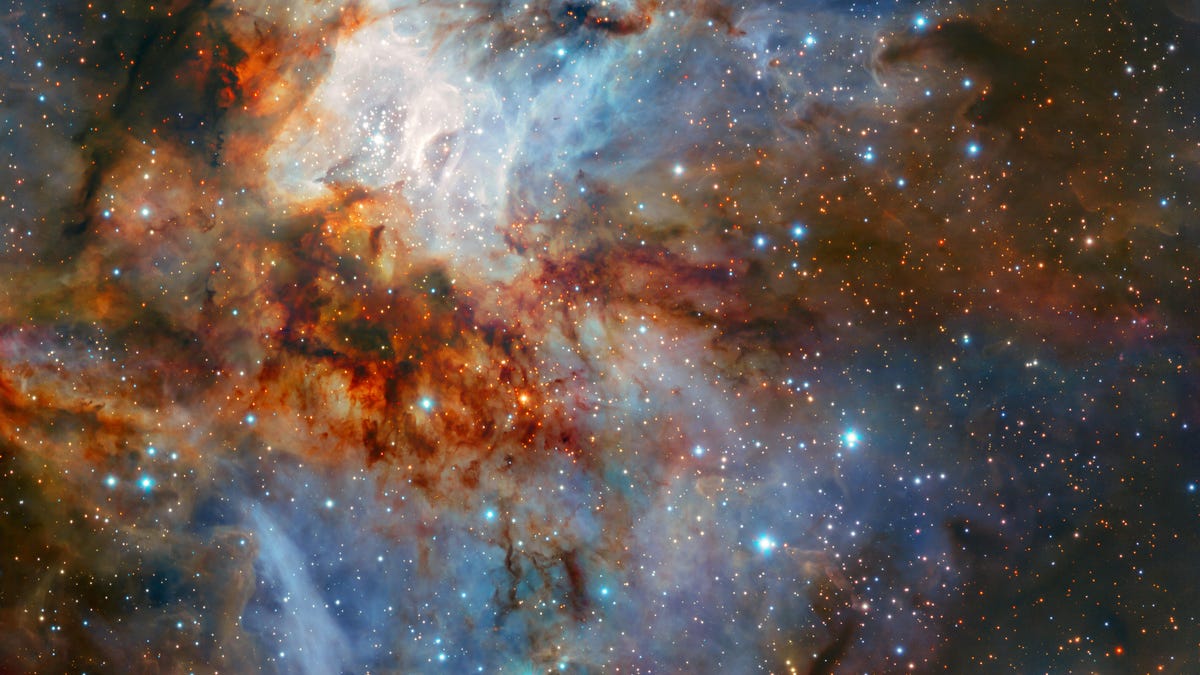Space looks better than ever, thanks to the ESO’s HAWK-I imager
Star cluster RCW 38 is full of “young, hot, massive stars” and they’re ready for their close up.

The Very Large Telescope (VLT) in Chile is being fitted with new a new optics module that will allow it to take some of the sharpest images of the cosmos yet, and on Wednesday just got a stunning first look.
The image above features the super star cluster known as RCW 38, which is located some 5,500 light years away from Earth. Billowing clouds of orange and red cosmic dust shimmer through streams of blue, where infant stars are born. It was taken during science verification testing of the High Acuity Wide-field K-band Imager (HAWK-I) and a new "adaptive optics" module called GRAAL.
HAWK-I is able to peer into space using infrared wavelengths allowing it to "see inside interstellar dust and gas" but GRAAL is the reason we've got this amazing cosmic painting.
When taking photos of the cosmos, Earth's atmosphere can get in the way, causing images to look blurry. The GRAAL module is able to correct for the effect of the atmosphere's ground layer which gives HAWK-I and the VLT the ability to take incredibly sharp pictures.
If you compare the image above to the below image of the same cluster taken in 2009, you can see that ESO's VLT has come a long way. Almost as far as the images of RCW 38.

